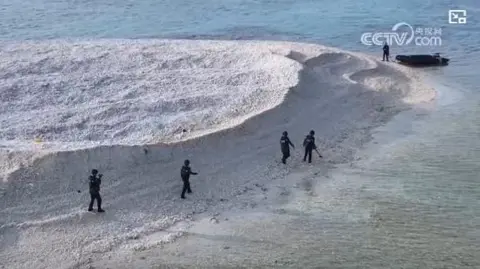South China Sea Tensions: Latest Disputes and Regional Impact
The South China Sea has long stood at the center of maritime and territorial disputes in Southeast Asia. Recent events have brought renewed attention to this crucial region, highlighting the ongoing contest for sovereignty and strategic control between regional powers. In this article, we'll explore the latest developments and examine how recent actions shape the future of the South China Sea.

Introduction to the South China Sea Dispute
The South China Sea is one of the world's busiest maritime corridors, serving as a key passage for commerce and natural resources. Overlapping claims from China, the Philippines, Vietnam, Malaysia, Taiwan, and Brunei have led to tense standoffs in recent years. The area is not only rich in fisheries and oil reserves but also carries immense strategic significance for both regional and global powers.
Escalation Over Sandy Cay: Competing Claims and Flags
Recent headlines have focused on the standoff over Sandy Cay in the Spratly Islands. Both China and the Philippines have asserted their claims by unfurling national flags on competing sandbars. According to BBC News, Chinese coast guard officers were photographed on the disputed reef, emphasizing Beijing's intent to implement maritime control and exercise "sovereign jurisdiction." The Philippines responded quickly, releasing their own images of security forces displaying the national flag nearby, reinforcing their commitment to upholding sovereignty.
The diplomatic back-and-forth comes alongside expanded military exercises in the region. US and Philippine forces have conducted large-scale drills, further highlighting the area’s volatility. These actions, as covered by CNN, underscore the role of external allies and the potential for the South China Sea to become a flashpoint for broader conflict.
Regional and Global Reactions
Both the White House and international observers have expressed concern over these developments. The United States reaffirmed its alliance with the Philippines, conducting live-fire exercises and deploying advanced missile systems nearby. Countries across the Asia-Pacific are watching closely, as regional security and freedom of navigation remain at stake.
While China insists its actions are legal and within its jurisdiction, the Philippines maintains that Chinese forces are infringing on its own sovereign rights. This tension is further documented in reports from Al Jazeera. Manila rejected Beijing’s claims of dealing with a supposed illegal mission, affirming their legitimate presence on Sandy Cay reefs and dismissing disinformation.
Historical Context and Ongoing Challenges
The disputes in the South China Sea have deep historical roots and evolving geopolitical dynamics. China’s claim is outlined by its so-called "nine-dash line," covering nearly the entire sea despite overlapping boundaries recognized by international law. Island-building and frequent naval patrols have intensified the situation, as neighboring countries vie to protect their interests and resources.
Joint military exercises, such as the annual Balikatan between the US and the Philippines, have become vital in demonstrating readiness and deterrence. The involvement of major powers adds complexity, raising the stakes and making resolution harder to achieve.
Conclusion: A Region on Edge
The South China Sea remains one of Asia’s most contested and closely watched regions. The latest sandbank disputes demonstrate the fragile balance between diplomacy and confrontation. Sustained engagement from global and regional actors may help prevent escalation, but the underlying issues require careful negotiation.
For readers interested in deeper insights, see the full coverage on Beijing's actions, flag displays on the sandbars, and the Philippine response. The outcomes of these disputes will continue to shape the future of maritime security and international relations in the Indo-Pacific.